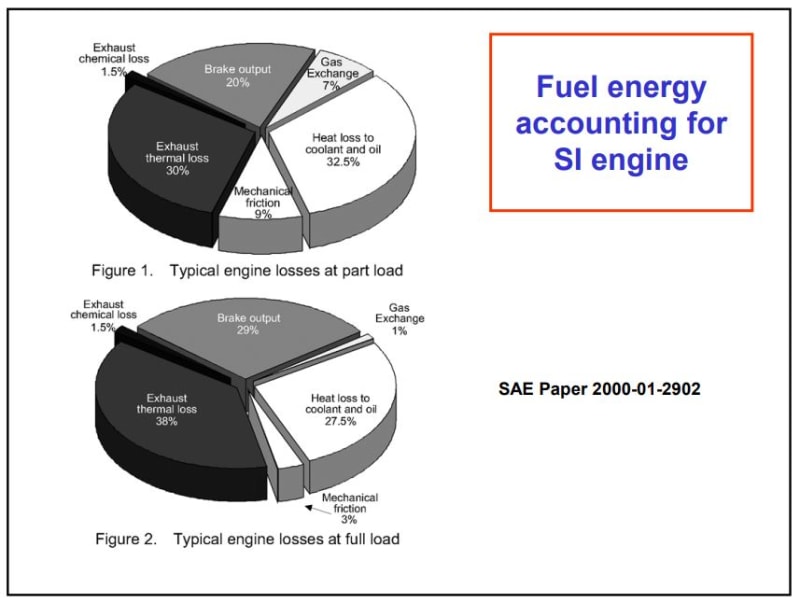Attached is a brief from Ricardo titled "
Calculation of Friction in High Performance Engines" presented at their 2010 European User Conference. It provides a lot of information regarding friction in the various components and subsystems of a high speed racing engine under both motored and loaded conditions. The below table showing friction of key components at 9,000 RPM was taken from slides 41, 43, and 45. Column M is FMEP (bar) when motored, L is FMEP (bar) motored, M% is percent of whole engine fiction when motored, and L% is percent of whole engine friction when loaded.
[pre]
M L M% L%
Whole Engine : 2.10 | 3.80 100% | 100%
Top Piston Rings : 0.04 | 0.04 1.9% | 1.9%
Oil Control Rings : 0.12 | 0.07 5.7% | 1.8%
Piston Skirts : 0.50 | 2.25 23.8% |59.2%
Small End Bearings: 0.01 | 0.01 0.4% | 0.3%
Big End Bearings : 0.14 | 0.15 6.7% | 3.9%
Main Bearings : 0.20 | 0.23 9.5% | 6.1%
[/pre]
From the above, piston skirts are the largest single contributor to engine friction at 9,000 RPM. The plot of skirt friction on slide 41 shows a marked increase of motored skirt friction as RPM increases (+100%) and a marked decrease (-33%) of loaded skirt friction. I assume the decrease of skirt friction with engine speed relates to transition from mixed lubrication to hydrodynamic lubrication on the Stribeck curve of slide 6. I'm guessing the increase of motored skirt friction with RPM has to do with piston kinetics.
Per the chart below from an MIT class on
Engine Friction and Lubrication, mechanical friction accounts for 3% (full load) to 9% (part load) of engine losses. By my calculations, a 50% reduction in skirt and bearing losses would result in efficiency gains of 1% (full load) to 3% (part load). That would be a pretty significant accomplishment in my opinion. Whether or not that gain can be accomplished and what increase in cost and complexity manufacturers are willing to accept to attain it is beyond me.



![[mad] [mad] [mad]](/data/assets/smilies/mad.gif)